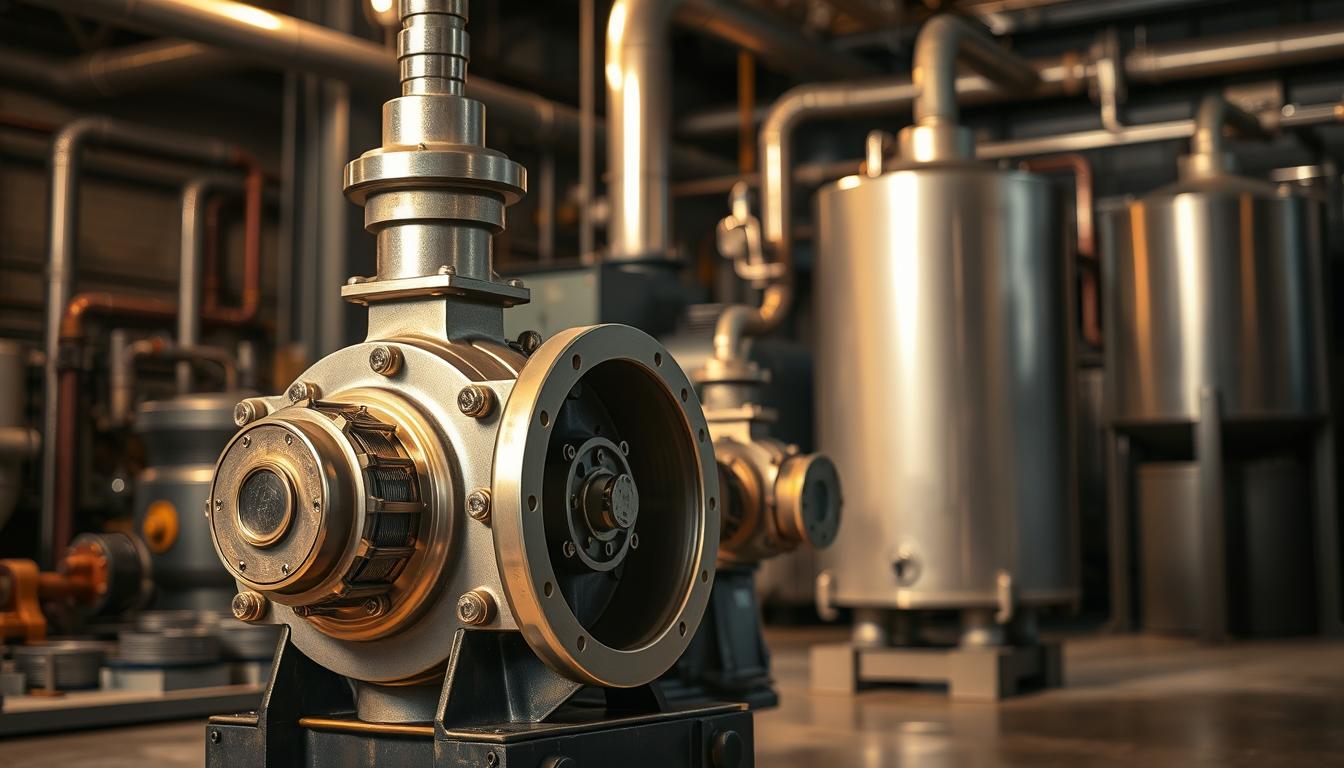High pressure pumps are very important in many industries. They help move fluids efficiently, even in tough conditions. I’ve seen how they are critical in oil and gas, manufacturing, and farming.
Knowing how these pumps work is essential. It helps make them perform better and last longer. This ensures they meet the needs of each specific use.
What Are High Pressure Pumps?
High pressure pumps are designed to increase the pressure of fluids a lot. They are key in many industrial settings. These pumps can push pressure over 10 bar (145 psi). They are used in injection molding, pressure washing, and chemical processing.
Fluid dynamics is the science behind how high pressure pumps work. It studies fluids under high pressure and speed. These pumps use this science to move materials efficiently, improving processes that need precise fluid flow.
High pressure pumps make complex operations possible. They help advance technology and manufacturing. With different pressure ranges, they meet many industrial needs, each with its own needs and specs.
Types of High Pressure Pumps:
I will explore the different types of high pressure pumps. We’ll look at their unique features and uses. There are mainly two types: positive displacement pumps and centrifugal pumps.
Positive displacement pumps work by trapping a set amount of liquid and then pushing it out under pressure. This makes them great for thick fluids. Cat Pumps, for example, offers reliable positive displacement pumps for tough environments.
Centrifugal pumps, on the other hand, use an impeller to create flow. They’re best for thin liquids and when you need a lot of flow. Gorman-Rupp is a top brand for these pumps, perfect for many industrial needs.
Knowing the differences between these pumps helps choose the right one for your needs.
Key Features of High Pressure Pumps:
High pressure pumps have key features that make them efficient and effective. The material used is a big factor. Many pumps are made of stainless steel, which helps them last longer and resist corrosion.
This makes them perfect for tough environments where other materials might not do well.
Looking at the pump’s specifications is also important. This includes the pressure ratings and flow rates. Knowing these helps make sure the pump fits the project’s needs.
Pumps from companies like Grundfos and KSB are made to meet specific industrial needs. They have the right pressure ratings for different tasks, ensuring they work well.
Energy efficiency is another key feature. Pumps that save energy cut down on costs and help the environment. These pumps are built to last, giving consistent performance without wearing out quickly.
Having these features in high pressure pumps means they are reliable and effective for a long time. These pumps are built to handle tough tasks in many industries.
Benefits of Using High Pressure Pumps:
High pressure pumps bring many advantages to different industries. They make processes more efficient and productive. These pumps can handle thick fluids well, which is key in precise fluid handling.
These pumps use less energy than old pumps. This means lower costs and less harm to the environment. It’s good for businesses and the planet.
High pressure pumps also make cleaning, spraying, and hydraulic systems better. They are flexible and help businesses stay productive. Knowing these benefits helps companies choose the right pumps for their needs.
Pumps: Choosing the Right One for Your Needs:
Choosing the right high pressure pump is important. I look at several factors to make sure it works well. First, I check what fluid it will pump, how much, and the pressure needed. This helps me find the best pump for my job.
It’s key to pick a pump that can handle the fluid’s properties. Things like viscosity and chemical safety matter. Also, the environment, like temperature and humidity, affects my choice. Brands like Pumptec and Blackmer have many options for different needs, ensuring reliability and performance.
Getting the pump size right is also critical. The wrong size can cause problems like cavitation or wear. This can be expensive and cause downtime. So, I calculate the system’s needs and choose a pump that fits. This way, I make a choice that meets my operational needs.
Maintenance and Troubleshooting High Pressure Pumps:
Keeping high pressure pumps running well needs regular care and quick fixes. It’s important to check them often to catch problems early. Make sure to change oil and filters as the manual says, like Viking Pump suggests.
Common issues like leaks, loud noises, or pressure drops can be fixed with the right steps. Knowing why these problems happen can save a lot of time and money. For example, a leak might mean a seal needs to be replaced right away.
Also, don’t forget to take care of your pump. Keep it clean and watch how it works. This helps avoid problems that slow it down. Following these steps helps your equipment last longer and work better.
